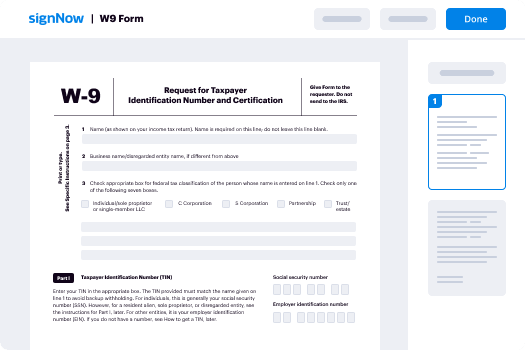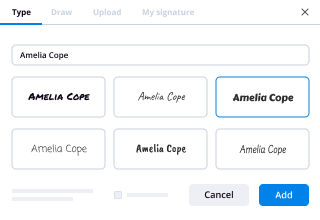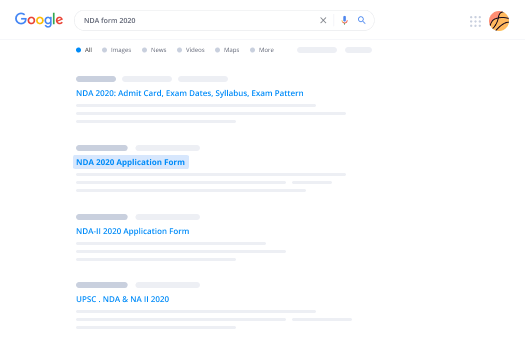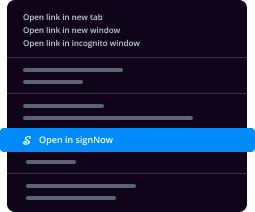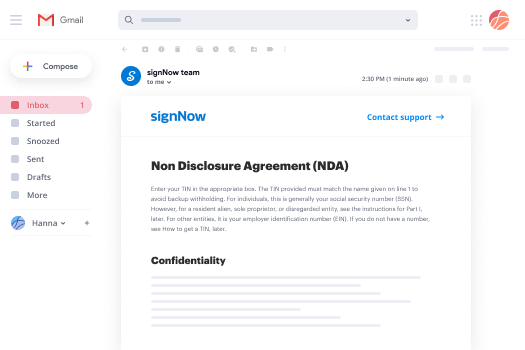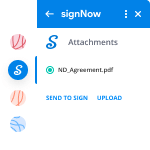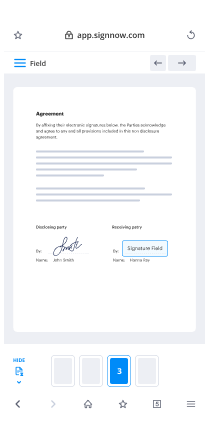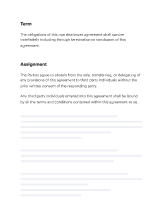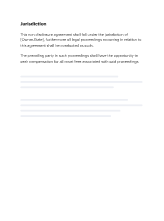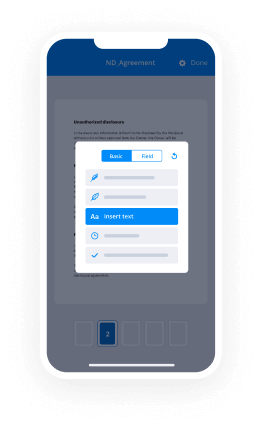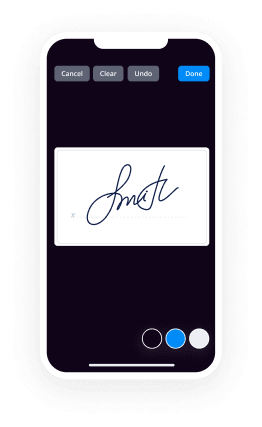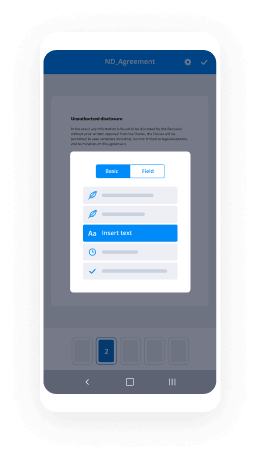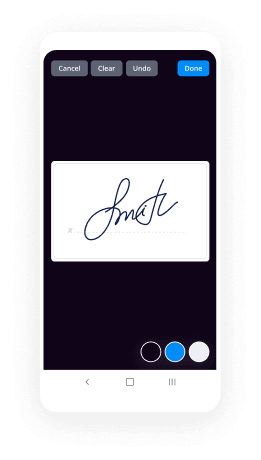Increase Compliance with eSignatures: How to Sign a Deed
- Quick to start
- Easy-to-use
- 24/7 support
Simplified document journeys for small teams and individuals




We spread the word about digital transformation
Why choose airSlate SignNow
-
Free 7-day trial. Choose the plan you need and try it risk-free.
-
Honest pricing for full-featured plans. airSlate SignNow offers subscription plans with no overages or hidden fees at renewal.
-
Enterprise-grade security. airSlate SignNow helps you comply with global security standards.







Increase the efficiency of the paperwork-based processes with airSlate SignNow
Easy-to-use eSignature tools
An all-in-one, secure hub for your paperwork
Robust integration and API functionality
User-friendly eSignature workflow configuration
eCommerce-leading protection and compliance
Dedicated support team
Quick guide on how to sign a deed
The airSlate SignNow eSignature solution is ready to substitute your handwritten signature and improve almost any paper-driven, manual procedures. Signing forms in electronic format saves time, cuts costs, and gives you the versatility to sign deals and business forms from anywhere and anytime, on any system. Keep reading to learn about how you can begin enhancing your approval workflows and sign and send documents for signature electronically.
Follow the steps listed below to learn how to sign a deed:
- Open your browser and visit signnow.com.
- Join for a free trial run or log in using your email or Google/Facebook credentials.
- Select User Avatar -> My Account at the top-right area of the webpage.
- Customize your User Profile with your personal data and changing settings.
- Make and manage your Default Signature(s).
- Go back to the dashboard webpage.
- Hover over the Upload and Create button and choose the appropriate option.
- Click on the Prepare and Send option next to the document's title.
- Input the email address and name of all signers in the pop-up box that opens.
- Make use of the Start adding fields option to proceed to modify file and self sign them.
- Click SAVE AND INVITE when completed.
- Continue to customize your eSignature workflow using advanced features.
It can't be easier to learn how to sign a deed than it is with airSlate SignNow. Register your account, modify and sign templates, request signatures, and track every action taken to your documents.
How it works
Rate your experience
What is a deed?
A deed is a legal document that signifies the transfer of ownership or interest in property. It serves as a formal agreement between parties, outlining the specifics of the transaction. In the context of real estate, a deed typically includes details such as the names of the grantor (seller) and grantee (buyer), a description of the property, and any conditions or restrictions associated with the transfer. Understanding the significance of a deed is essential for anyone involved in property transactions.
Steps to complete the deed electronically
Completing a deed electronically involves several straightforward steps. First, access the deed template through airSlate SignNow. Fill in the required fields, including the names of the parties involved and the property description. Once the document is filled out, you can easily send it for signature. Signers will receive an email notification prompting them to review and eSign the document. After all parties have signed, the completed deed can be securely stored or shared as needed.
Key elements of a deed
When preparing a deed, it is important to include several key elements to ensure its validity. These elements typically include:
- Grantor and Grantee Information: Clearly state the names and addresses of the parties involved.
- Property Description: Provide a detailed description of the property being transferred, including its legal description.
- Consideration: Mention the amount paid for the property or any other consideration exchanged.
- Signatures: Ensure that all parties sign the document, which can be done electronically through airSlate SignNow.
Including these elements helps to ensure that the deed is legally binding and enforceable.
Legal use of a deed
Deeds are legally binding documents that must adhere to specific state laws and regulations. In the United States, the requirements for executing a deed can vary by state. Generally, a deed must be signed by the grantor and may need to be notarized or witnessed, depending on local laws. Using airSlate SignNow for electronic signatures ensures compliance with legal standards, as the platform maintains a secure audit trail and provides evidence of consent from all parties involved.
State-specific rules for signing a deed
Each state has its own regulations regarding the signing and recording of deeds. It is crucial to be aware of these rules to ensure the deed's validity. Some states require notarization, while others may have specific formatting requirements. When using airSlate SignNow, users can select state-specific templates that comply with local laws, making the process smoother and more efficient. Always verify state-specific requirements before finalizing the deed.
Security & Compliance Guidelines
When signing a deed electronically, security and compliance are paramount. airSlate SignNow employs advanced encryption methods to protect sensitive information throughout the signing process. The platform also complies with the Electronic Signatures in Global and National Commerce Act (ESIGN) and the Uniform Electronic Transactions Act (UETA), ensuring that electronic signatures are legally recognized. Users can confidently manage their documents, knowing that their data is secure and compliant with applicable regulations.
-
Best ROI. Our customers achieve an average 7x ROI within the first six months.
-
Scales with your use cases. From SMBs to mid-market, airSlate SignNow delivers results for businesses of all sizes.
-
Intuitive UI and API. Sign and send documents from your apps in minutes.
FAQs
-
What is the process of how to sign a deed using airSlate SignNow?
To sign a deed using airSlate SignNow, simply upload your document, add the necessary signers, and place signature fields where needed. Once everything is set, you can send the document for eSignature. The signers will receive an email notification to complete the signing process, making it quick and efficient.
-
Is there a cost associated with learning how to sign a deed on airSlate SignNow?
airSlate SignNow offers various pricing plans, including a free trial that allows you to explore how to sign a deed without any initial investment. After the trial, you can choose a plan that fits your business needs and budget, ensuring you get the best value for your eSigning requirements.
-
What features does airSlate SignNow offer for signing deeds?
airSlate SignNow provides a range of features for signing deeds, including customizable templates, mobile access, and real-time tracking of document status. These features streamline the signing process and enhance the overall user experience, making it easier to understand how to sign a deed effectively.
-
Can I integrate airSlate SignNow with other applications for signing deeds?
Yes, airSlate SignNow offers integrations with various applications such as Google Drive, Salesforce, and Microsoft Office. This allows you to seamlessly manage your documents and understand how to sign a deed within the tools you already use, enhancing productivity and efficiency.
-
What are the benefits of using airSlate SignNow to sign a deed?
Using airSlate SignNow to sign a deed provides numerous benefits, including increased efficiency, reduced paper usage, and enhanced security. The platform ensures that your documents are signed quickly and securely, allowing you to focus on other important aspects of your business.
-
Is it legally binding to sign a deed electronically with airSlate SignNow?
Yes, signing a deed electronically with airSlate SignNow is legally binding in many jurisdictions, provided that the eSignature complies with local laws. airSlate SignNow adheres to the ESIGN Act and UETA, ensuring that your electronic signatures are valid and enforceable.
-
How can I track the status of my deed after signing?
After signing a deed with airSlate SignNow, you can easily track its status through the dashboard. The platform provides real-time updates on who has signed and who still needs to sign, giving you complete visibility into the signing process and helping you manage your documents effectively.





























